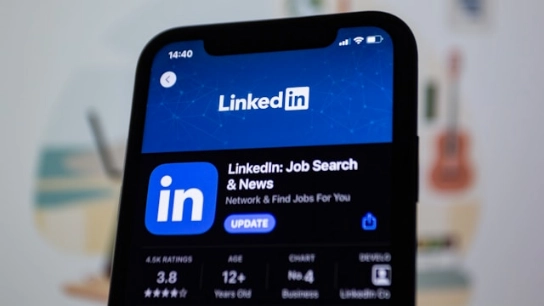10 Tips on How to Improve the Recruitment Process

A successful team of employees isn’t created overnight. Hiring managers must find, interview, and train the right employees for their company. Well-structured hiring processes help employers find more suitable candidates and keep them.
A bad hire costs valuable time and money, so it’s important to select the right person for the job. Therefore, in this blog post, we will identify the main steps in the hiring process and provide tips on how to improve the recruitment process.
Parts of the Hiring Process
The hiring process consists of a few steps that may vary depending on a company’s culture, size, and needs.
1. Planning: Consider what the right candidate would look like. Create a candidate profile to narrow down who you're looking for focusing on the job description, role specifics, and ideal character traits.
2. Job Posting: After selecting where the best pool of candidates is, it's time to spread the word. Advertise job openings on career boards, social media, or your company’s careers page.
3. Screening: This phase involves reviewing resumes and applications to find stand-out applicants.

4. Interviewing: Learn more about applicants by asking about their skills, qualifications, and experience. Sometimes interviews may last several rounds to narrow down the list of applicants and find the perfect one.
5. Selection: As the hiring process wraps up, choose the most promising applicant by keeping in mind what you outlined in the first step when making the decision.
6. Hiring: The process concludes once you find the right candidate and they accept your offer.
Best Practices for Hiring Employees
If you are wondering how to improve the recruitment process, here are 10 tips for you:
1. Refine Your Employer Branding Strategies
A significant amount of job seekers consider company culture as important when choosing to apply for a job. Job applicants are often faced with lots of career options that have unclear brand standards. In these scenarios, the applicant will prefer a company with clear brand messaging. Why should they apply somewhere that hasn’t defined their company culture?

2. Write Clear Job Listings
A cluttered, long-winded job description is the enemy of recruiters. Instead, focus on writing a description that's accurate and clear. If you are forward during the initial job posting, the odds of finding great candidates go up.

Here are a few tips on writing job descriptions:
3. Establish Solid Talent Pipelines
To find qualified candidates, companies must know where to search for them. There are a few factors to consider here.
First, know where to cast the widest net to give your job postings the most visibility. The largest channels job seekers use are online job boards, social media profiles, and word of mouth.

Another underrated way to source new employees is to leverage the ones you already have. Aside from job ads, hiring within is also an option if you know someone qualified on your team.
Your employees may also have a lot of hidden talent in their existing network. Employee referral programs streamline the recruitment process and give employees incentives for referrals. They also indicate that you are considering your employees’ perspectives.
4. Be Transparent
Transparency is key to building trust. Explaining your company’s hiring steps, providing timelines, and informing candidates about compensation details ensures finding the right candidate.
When candidates know what to expect from the beginning, they can decide whether they want to invest their time and effort into this process. So this enables you to narrow down the candidate list.
5. Use Technology to Speed Things Up
Once the applications flow in, you’ll need to review them. Looking through applications, cover letters, and resume takes a lot of time. If you have dozens and dozens of applicants, it's nearly impossible to read them all yourself.

Using an applicant tracking system (ATS) is a convenient solution to this problem. An ATS is a recruiting software that tracks applications. It also filters applicants matching your job description. This saves time and talent acquisition costs, allowing you to put more time into interviewing candidates.
6. Streamline the Application Process
The way to improve the hiring process is to improve the candidate experience. Having a long application form can lead to high drop-off rates. Avoid unnecessary questions in the application forms and make sure the application process is easy to follow.

Make sure to choose the best hiring platform since the platform you choose is crucial for the overall candidate experience. For example, some platforms offer easy-apply buttons that provide convenience. Ensuring candidates can apply via smartphones is also important as mobile phones are an undeniable part of our lives.
7. Make Sure Your Interviews are Structured
Using a set of predefined questions ensures consistency and fairness. Therefore, standardizing questions and having a scoring system can help you identify the best candidates. Include behavioral questions and focus on the skills you are looking for.
8. Track Key Metrics to Optimize the Process
Monitor your recruitment process and analyze data regularly to optimize the process. Key metrics that will help you identify areas to improve are time-to-hire, cost-per-hire, offer acceptance rate, candidate satisfaction, quality of hire, and retention rate.
9. Prioritize Retention
Keeping talented employees is extremely significant. A healthy work culture can increase retention and reduce turnover rates; therefore, this tip is closely related to your employer branding strategies. Fostering a positive work environment includes showing appreciation and providing competitive compensation.

To improve retention rates, you need to evaluate candidates considering their long-term potentials. Being upfront is also key to keeping talented employees who have made an informed decision when accepting the role.
10. Automate Your Note-Taking
An important part of the interview process is taking detailed notes. Taking notes helps you organize information and identify key points in the interview.

Maestra is a software that automates transcriptions, captions, and more in over 125 languages. With the help of Maestra’s web captioner, you can take notes in real time without taking long pauses in the interview to write things down.
You can also use Maestra to transcribe recordings. Upload your audio or video file to Maestra and get detailed transcripts in minutes!
Key Takeaways on How to Improve the Recruitment Process
These 10 best practices for recruiting new employees will ensure you hire top talent. Having a structured interview plan, being transparent, refining your employer branding, focusing on improving the overall candidate experience, and making use of technology are crucial for the success of your recruiting process.

To improve your employee hiring process, you need the right tools that make the process seamless. With Maestra, you don’t have to worry about missing a detail again because it can generate transcriptions of your interviews in seconds.